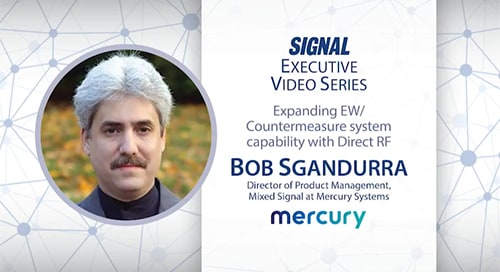Today's pace of technology development means the traditional approach of custom-designed modules and subsystems is too slow, but Modular Open System Architecture (MOSA) approaches can deliver on system demands without sacrificing performance or scalability.
VODCAST HIGHLIGHTS
What problems do customers have that can be solved with MOSA-based approaches?
Customers are trying to acquire and to generate signals in the range of 2 GHz to 18 GHz and do that with an instantaneous bandwidth throughout that range of 2 GHz. They also need to perform signal processing on the received signal before it gets sent out as a transmit signal. Usually that's done in an FPGA. The time it takes between the input and the output has to be extremely short, which means low latency.
What are some MOSA products Mercury offers as a solution to this need?
The first one is the RFM3202, which is a dual-channel RF up-converter and down-converter 3U VPX board. It mates directly with the second product, the DCM3220, which has two A-to-D converters and two D-to-A converters, as well as FPGA processing elements inside the 3U VPX board. Together as a pair, they represent a complete solution. What kind of applications do the MOSA products support? Ultra-wide, ultra-high-bandwidth applications from 0.3 GHz up to 18 GHz, including radar applications, and applications in SWaP-constrained, rugged environments such as unmanned airborne and naval.



















